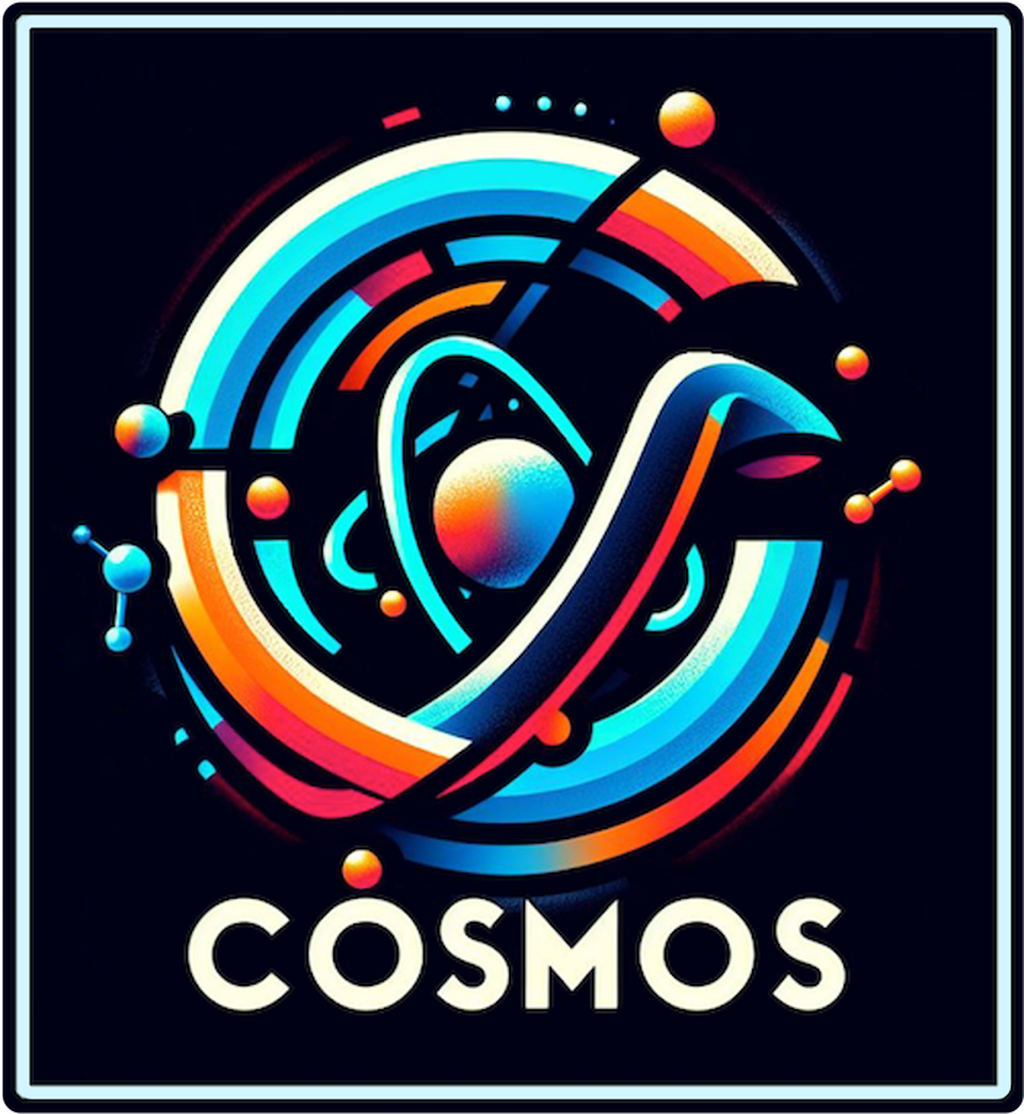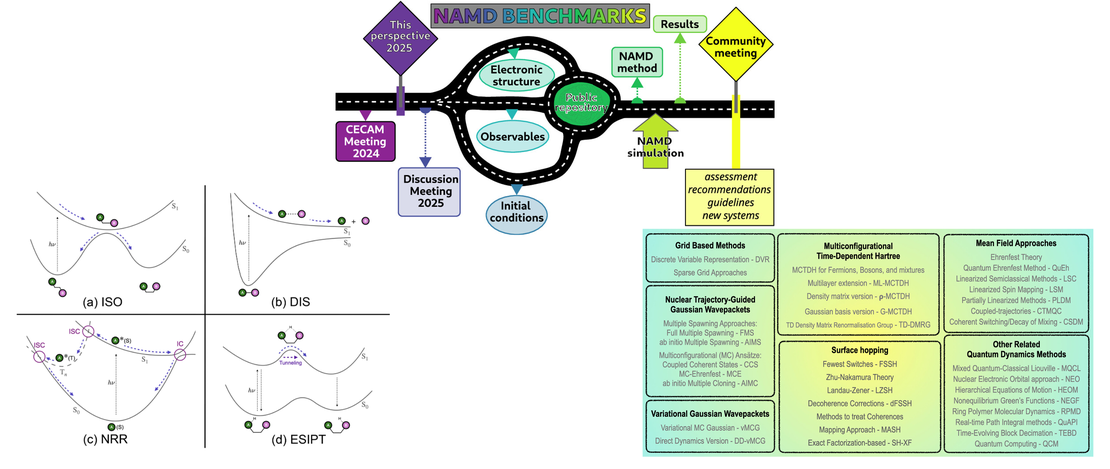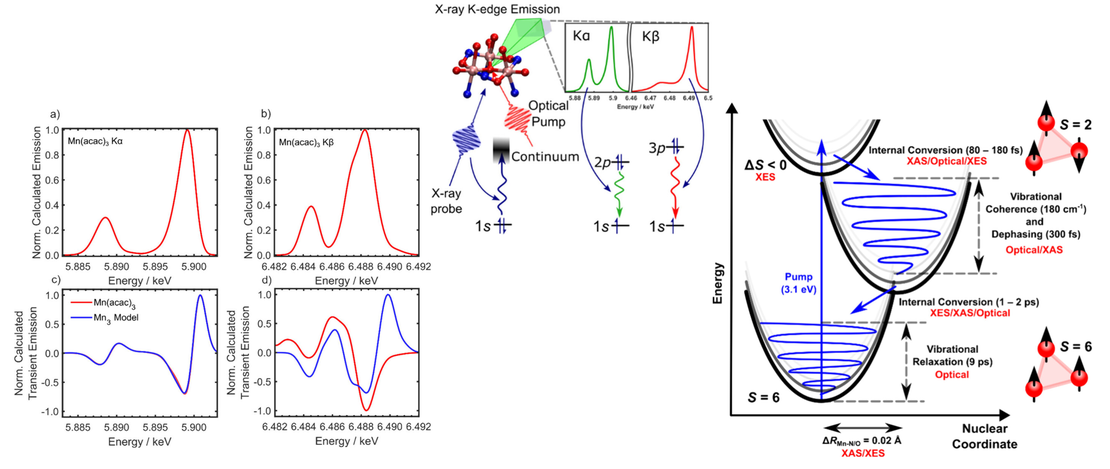Coherent States in Molecular Simulations
A Universal Approach for Solving Real-World Problems Using Quantum Dynamics

Featured Publications

Roadmap for Molecular Benchmarks in Nonadiabatic Dynamics
- Léon L. E. Cigrang, Basile F. E. Curchod, Rebecca A. Ingle, Aaron Kelly, Jonathan R. Mannouch, Davide Accomasso, Alexander Alijah, Mario Barbatti, Wiem Chebbi, Nadja Došlić, Elliot C. Eklund, Sebastian Fernandez-Alberti, Antonia Freibert, Leticia González, Giovanni Granucci, Federico J. Hernández, Javier Hernández-Rodríguez, Amber Jain, Jiří Janoš, Ivan Kassal, Adam Kirrander, Zhenggang Lan, Henrik R. Larsson, David Lauvergnat, Brieuc Le Dé, Yeha Lee, Neepa T. Maitra, Seung Kyu Min, Daniel Peláez, David Picconi, Zixing Qiu, Umberto Raucci, Patrick Robertson, Eduarda Sangiogo Gil, Marin Sapunar, Peter Schürger, Patrick Sinnott, Sergei Tretiak, Arkin Tikku, Patricia Vindel-Zandbergen, Graham A. Worth, Federica Agostini, Sandra Gómez, Lea M. Ibele and Antonio Prlj
- Publication , Project collaboration , Perspective
Simulating the coupled electronic and nuclear response of a molecule to light excitation requires the application of nonadiabatic molecular dynamics. However, when faced with a specific photophysical or photochemical problem, selecting the most suitable theoretical approach from the wide array of available techniques is not a trivial task…
Read More
Capturing Ultrafast Spin Dynamics in Single-Molecule Magnets Using Femtosecond X‑ray Emission Spectroscopy
- Kyle Barlow, Ryan Phelps, Julien Eng, Rebecca A. Ingle, Dmitry Khakhulin, Mykola Biednov, Sharmistha Paul Dutta, Yifeng Jiang, Frederico A. Lima, Vandana Tiwari, Christopher Milne, Tetsuo Katayama, Marco Coletta, Euan K. Brechin, Thomas J. Penfold and J. Olof Johansson
- Publication , Project collaboration
Achieving ultrafast photomagnetic switching of single-molecule magnets (SMMs) could lead to simultaneous fast and dense data storage devices. To facilitate this, a thorough understanding of the ultrafast dynamics emerging after ultrashort laser pulse excitation is essential. However, the complex nature of these materials means there is a lack of established experimental techniques that can probe the spin dynamics in SMMs…
Read MoreAbout the COSMOS Project

Answering Fundamental Questions
Experiments using modern laser technologies and new light sources look at quantum systems undergoing dynamic change to understand molecular function and answer fundamental questions relevant to chemistry, materials and quantum technologies. Typical questions are:
- How can molecules be engineered for maximum efficiency during energy harvesting, UV protection or photocatalysis?
- What happens when strong and rapidly changing laser fields act on electrons in atoms and molecules?
- How fast do qubits lose information due to interactions with the environment?
- Will an array of interacting qubits in future quantum computers remain stable over long time-scales?

Predicting Experimental Results
Quantum Dynamics (QD) simulations, rooted in the theory of quantum motion, play a crucial role in interpreting time-resolved experiments aimed at unraveling complex molecular processes. Despite advancements, QD simulations face methodological challenges such as computational costs and accurate prediction of experimental outcomes, necessitating collaborative efforts to overcome these hurdles.
- QD simulations hold promise in providing quantitative predictions for large molecular systems, aiding in the interpretation of intricate signals observed in state-of-the-art experiments
- Challenges including computational expense and the precise prediction of experimental observables hinder the full potential of QD simulations, requiring collective action from the research community.
- Overcoming these challenges will not only advance QD research but also benefit the broader experimental and computational communities by providing deeper insights into quantum processes and facilitating more accurate predictions of experimental outcomes

Our Vision
The key to our vision is centered on the creation and widespread adoption of advanced universal software for Quantum Dynamics (QD) simulations, built upon our collective expertise in QD methodologies centered around trajectory-guided basis functions. Currently, the fragmented nature of academic software development poses challenges to progress in QD simulations. However, we see immense potential for collaboration, method comparison, and innovation.
- Our aim is to develop powerful and accessible software for QD simulations, empowering both computational and experimental researchers to effectively model photo-excited molecular behavior and interpret modern experiments.
- Integration of diverse existing methods into a unified codebase will foster collaboration and facilitate method comparison across research groups.
- Implementation of new mathematical and numerical concepts will drive advancements in QD simulations, pushing the boundaries of achievable system size and time scales.
- The unified code will democratize QD research, making it accessible to non-specialists and promoting interdisciplinary collaboration.
- Establishing a common software framework will break down barriers between different QD research communities, fostering greater exchange of ideas and accelerating progress in the field.





